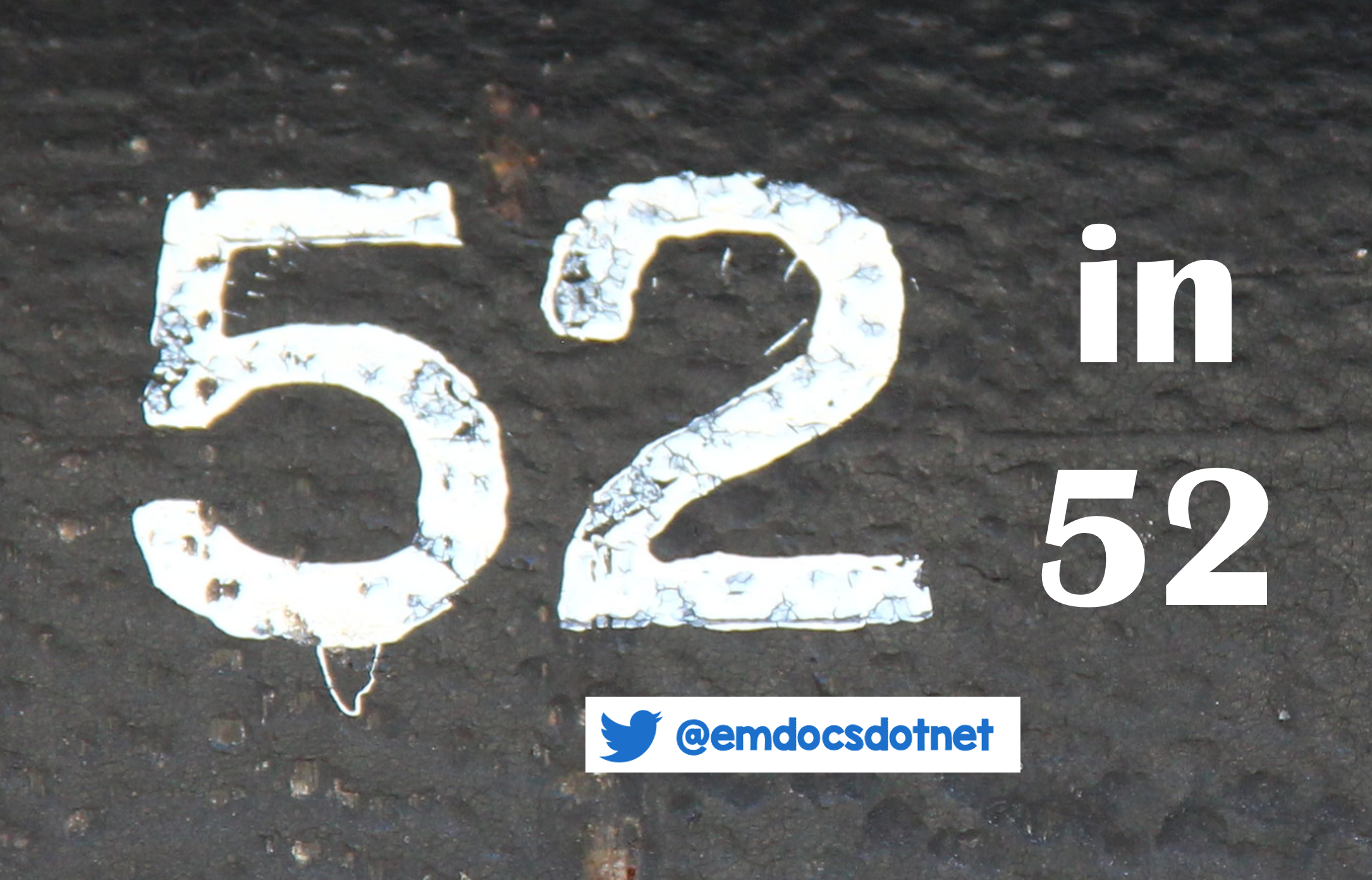Welcome back to the “52 in 52” series. This collection of posts features recently published must-know articles. Our tenth post looks at the SHINE trial.

Author: Brannon Inman (Chief Resident, Emergency Medicine Physician, San Antonio, TX) // Reviewed by: Alex Koyfman, MD (@EMHighAK); Brit Long, MD (@long_brit)
Nasal High-Flow Therapy during Neonatal Endotracheal Intubation
AKA: THE “SHINE” TRIAL
Clinical question:
In neonates undergoing elective intubation, does high flow nasal cannula (HFNC) increase first pass success without physiologic compromise, when compared to placebo?
Study design:
- Computer-generated open-label (non-blinded) randomized controlled clinical trial
- Stratified according to
- Center
- Postmenstrual age (gestational age + chronological age)
- ≤ 28 weeks
- > 28 weeks
- Use of pre-medication
- Stratified according to
- The primary outcome was successful intubation on the first attempt without physiological instability
- Defined as:
- Absolute decrease in the peripheral oxygen saturation of >20% from the pre-intubation baseline level
- Bradycardia with a heart rate of <100 beats per minute in the infant
- Defined as:

PICO:
Population:
– Included 251 intubations in 202 neonates undergoing oral endotracheal intubation in the delivery room or NICU in Melbourne, Australia
– Exclusion criteria:
- Undergoing nasotracheal intubation
- Urgent/emergent intubation as determined by the treating clinician
- Baseline bradycardia of <120 beats
- Contraindication to high-flow therapy (e.g., congenital nasal anomaly, congenital diaphragmatic hernia, or abdominal wall defect)
- Cyanotic congenital heart disease (truncus arteriosus, transposition, tricuspid atresia, tetralogy, total anomalous pulmonary venous return)
- Suspected or proven severe COVID infection in the infant or mother
Intervention:
- HFNC set to 8 L/min
- FiO2 set to the FiO2 patient was receiving before intubation, or set to 100% if SpO2 was < 90%
Comparator:
- Standard practice, reportedly no supplemental O2
Outcome:
- First pass success was significantly greater in the intervention group
- 50% vs 31.5% (adjusted risk difference, 17.6 percentage points; 95% confidence interval [CI], 6.0 to 29.2)
- the number needed to treat was 6 (95% CI, 4 to 17)
- Successful intubation on the first attempt regardless of physiological stability
- 5% vs in 54.3% in the control (adjusted risk difference, 15.8 %; 95% CI, 4.3 to 27.3).
Take away:
- Positive trial
- Pediatric critical care can often be like the wild west, with a dearth of data, and practice guidelines bursting at the seams with expert opinion. However, this was a reasonably well-conducted RCT on an important topic: first pass intubation success. Sadly, this didn’t include the critically ill patients that we focus on.
- Additionally, this study only included two centers in the same city in Australia. In this area, it was common practice to use pre-treatment medications, which is not common practice in all facilities. This may limit the external validity of the study’s results.
- This study was not blinded. This is a weakness, though blinding would have been difficult to perform.
- This effect seemed to be more notable for novice intubators (defined as less than 20 intubations). This may apply to the standard ED doc depending on how many neonates that doctor intubates.
- This study excluded cyanotic congenital heart children. This limits the applicability in the ED as we often don’t have this information available to us.
My take:
Based on this data I will consider using high flow nasal cannula on the neonate patients I intubate, though there are several limitations with this study. However, I already perform apneic oxygenation on adults that I intubate routinely. Physiologically it makes sense that this would be beneficial to critically ill pediatric and neonate patients undergoing intubation. I will wait on further research addressing the external validity of this study before I make this a routine part of my clinical practice. However, I will keep this in mind for select patients.
Reference:
- Hodgson KA, Owen LS, Kamlin COF, et al. Nasal High-Flow Therapy during Neonatal Endotracheal Intubation. N Engl J Med. 2022;386(17):1627-1637. doi:10.1056/NEJMoa2116735









